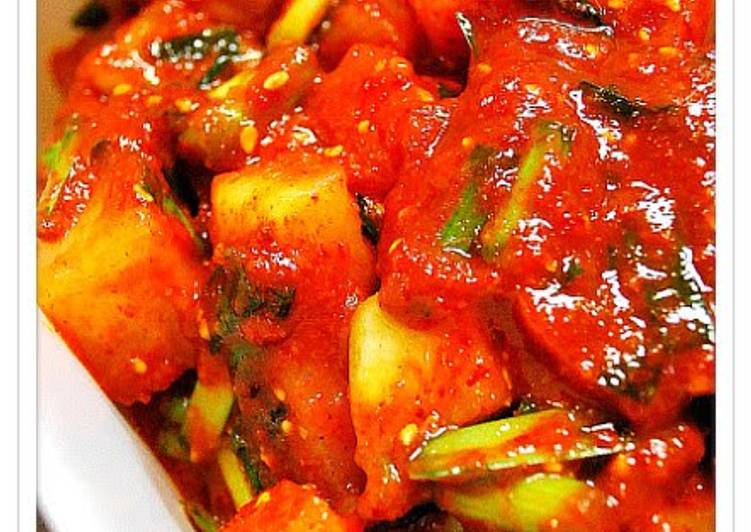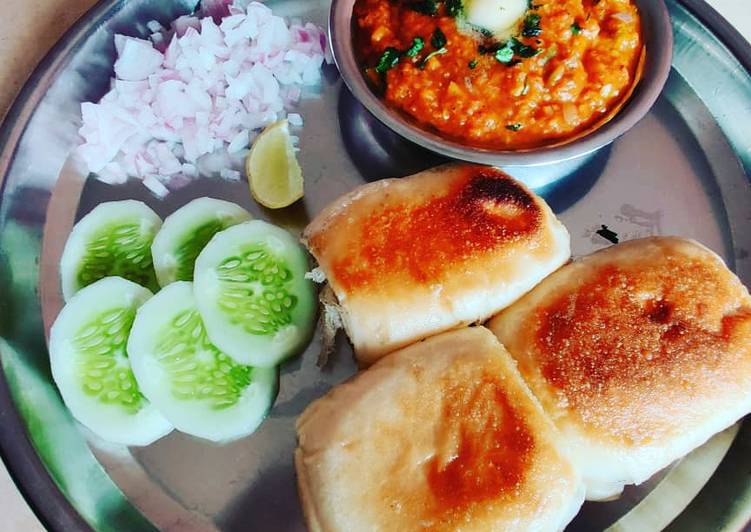
Whats up everybody, this time we offers you kkakdugi (cubed radish kimchi) recipes of dishes which are simple to grasp. We will share with you the recipes that you’re searching for. I’ve made it many times and it is so scrumptious that you just guys will adore it.
Kkakdugi (깍두기) is a kimchi made with Korean radish, mu (or moo, 무). It's an easy kimchi to make! Simply cut the radishes into cubes, salt for a short time, and then mix with the seasonings.
Kkakdugi (Cubed Radish Kimchi) is one of the most popular of current trending foods on earth. It is appreciated by millions daily. It’s easy, it is fast, it tastes delicious. They are nice and they look wonderful. Kkakdugi (Cubed Radish Kimchi) is something that I have loved my entire life.
To begin with this recipe, we have to prepare a few ingredients. You can have kkakdugi (cubed radish kimchi) using 21 ingredients and 19 steps. Here is how you cook that.
The ingredients needed to make Kkakdugi (Cubed Radish Kimchi):
- Take 1 Daikon radish
- Take 16 grams Salt
- Get 15 ★ Small dried sardines (niboshi)
- Get 2 pieces ★ Kombu
- Make ready 1000 ml ★ Water
- Take 160 grams ▼ Rice
- Take 23 grams ▼ Dashi soup stock
- Get 100 grams ◆ Onions
- Make ready 53 grams ◆ Garlic
- Take 30 grams ◆ Ginger
- Make ready 5 ◆ Korean red chili peppers (red)
- Get 90 grams ◆ Japanese plum extract
- Take 60 grams ◆ Sardine extract
- Get 30 grams ◆ Fermented krill
- Prepare 50 grams ◎ Korean red chili powder (for kimchi)
- Take 50 grams ◎ Red chili powder (seasoning)
- Get 1/2 bunch ☆ Green onions
- Get 1/2 bunch ☆ Chinese chives
- Prepare 30 grams Sugar
- Make ready 12 grams Salt
- Prepare 30 grams Toasted sesame seeds
What is Radish Kimchi (Kkakdugi) Radish kimchi is a kimchi made out of radish and its Korean name is Kkakdugi (깍두기). The name originates from kkakduk sseolgi (깍둑설기) in Korean. It describes the motion of cutting food in cubes. Jump to Recipe for Kkakdugi (깍두기) - Cubed Radish Kimchi.
Instructions to make Kkakdugi (Cubed Radish Kimchi):
- Thoroughly rinse the daikon radish, and peel the skin with a peeler. Set aside the stalk end and root end. Do not discard.
- Chop the daikon radish into 2 cm rounds, dice them into 2 cm square cubes, then place them in a large bowl. Set aside the triangular shaped pieces.
- While chopping the daikon into cubes, place the ★ ingredients, the triangular shaped daikon pieces and the root end into a large pot with water to prepare the broth.
- Thoroughly rinse the stalk end, and cut the undamaged leaves into 2 cm lengths.
- Combine the cubed daikon and the leaves, add salt, lightly toss, and let sit for 1 hour. Do not rub the salt in.
- After 30 minutes, gently toss to evenly distribute the salt. Do not rub the salt in.
- Turn on the heat under the pot from Step 3, reduce it to medium-low heat after bringing it to a boil, then simmer for 30 minutes to make the broth. Do not let it boil.
- After about 1 hour, thoroughly drain the daikon and leaves from Step 6.
- After the broth is finished, prepare the yangnyeom. Put the rice in a bowl, pour in the hot broth, then process with a hand mixer.
- Process the rice and broth from Step 9 into a thick paste-like porridge, and transfer it to a large bowl.
- Prepare the ◆ ingredients to add to the porridge from Step 10. Remove the seeds from the red chili peppers, then roughly chop them with the onion, garlic, and ginger to make them easy to process, then add them to the porridge.
- Pulse the porridge with the added ingredients, check to make sure that the red chili peppers are finely processed, then turn off the mixer.
- You should be able to buy the Japanese plum extract at a Korean specialty shop. You could also substitute it with sweet syrup or a mild honey, but you will need to adjust the amount of sugar that you add.
- Add the plum extract to the porridge from Step 12, mix well, let it sit for 10 minutes, then stir again. Then the yangnyeom is ready.
- Place the daikon and leaves from Step 8 into a bowl, chop the ☆ ingredients into 2 cm lengths, add them with 250 g of the yangnyeom from Step 14, and evenly combine.
- Gradually mix in the sugar and the salt, and season to taste.
- Add the toasted sesame seeds and mix.
- It's done! Enjoy the three distinct flavors of freshly pickled kkakdugi, marinated kkakdugi, and sweetly acidic kkakdugi
- Store it in a Tupperware container with a lid, let it sit for a day at room temperature, then store it in the refrigerator from the next day onwards.
When it comes to kimchi varieties, I love any radish-type kimchi! The crunchy radish just makes me so happy! One of my favorites is an easy one, called Kkakdugi (깍두기). It's a large Korean radish that's been cubed up and seasoned very similarly to a standard napa cabbage kimchi. My mom made kkakdugi for us when we were.
Above is the right way to prepare dinner kkakdugi (cubed radish kimchi), very straightforward to make. Do the cooking stages correctly, loosen up and use your coronary heart then your cooking might be delicious. There are lots of recipes that you may attempt from this website, please find what you want. If you happen to like this recipe please share it with your folks. Completely satisfied cooking.

